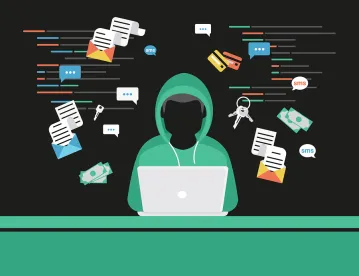The news is everywhere: Equifax, one of the country’s three main credit reporting agencies, has been hacked. The breach apparently took place from mid-May through July, during which the hackers accessed people’s names, Social Security numbers, credit card numbers, personal ID numbers, birth dates, addresses, and driver’s license numbers. People in the UK and Canada were also affected.
The Equifax data breach is a significant event that likely has repercussions for almost all adults in the country. In response to the breach, the Federal Trade Commission (FTC) sent out an alert that provides helpful information on how to check to see if you are affected, and what steps to take to protect yourself. If you are among the 143 million Americans potentially compromised by the hack, you will be enrolled in a monitoring service. You can also place a security freeze on your account, and the FTC provides step-by-step instructions on how to do so. Note that some states allow companies to charge a small fee – usually $5-$10 - for this service.
The FTC advises consumers to take the following steps by visiting the Equifax website:
-
“Find out if your information was exposed. Click on the “Potential Impact” tab and enter your last name and the last six digits of your Social Security number. Your Social Security number is sensitive information, so make sure you’re on a secure computer and an encrypted network connection any time you enter it. The site will tell you if you’ve been affected by this breach.
-
Whether or not your information was exposed, U.S. consumers can get a year of free credit monitoring and other services. The site will give you a date when you can come back to enroll. Write down the date and come back to the site and click “Enroll” on that date. You have until November 21, 2017 to enroll.
-
Check your credit reports from Equifax, Experian, and TransUnion — for free — by visiting annualcreditreport.com. Accounts or activity that you don’t recognize could indicate identity theft. Visit IdentityTheft.gov to find out what to do.
-
Consider placing a credit freeze on your files. A credit freeze makes it harder for someone to open a new account in your name. Keep in mind that a credit freeze won’t prevent a thief from making charges to your existing accounts.
-
Monitor your existing credit card and bank accounts closely for charges you don’t recognize.
-
If you decide against a credit freeze, consider placing a fraud alert on your files. A fraud alert warns creditors that you may be an identity theft victim and that they should verify that anyone seeking credit in your name really is you.
-
File your taxes early — as soon as you have the tax information you need, before a scammer can. Tax identity theft happens when someone uses your Social Security number to get a tax refund or a job. Respond right away to letters from the IRS.
-
Visit Identitytheft.gov/databreach to learn more about protecting yourself after a data breach. There are also steps to take to help protect your information from being misused. Visit Equifax’s website, www.equifaxsecurity2017.com.”
As with any other significant data breach, it is always advisable to take a few minutes to check to see if you are affected and take some simple steps to help protect you from identity theft.




 />i
/>i

